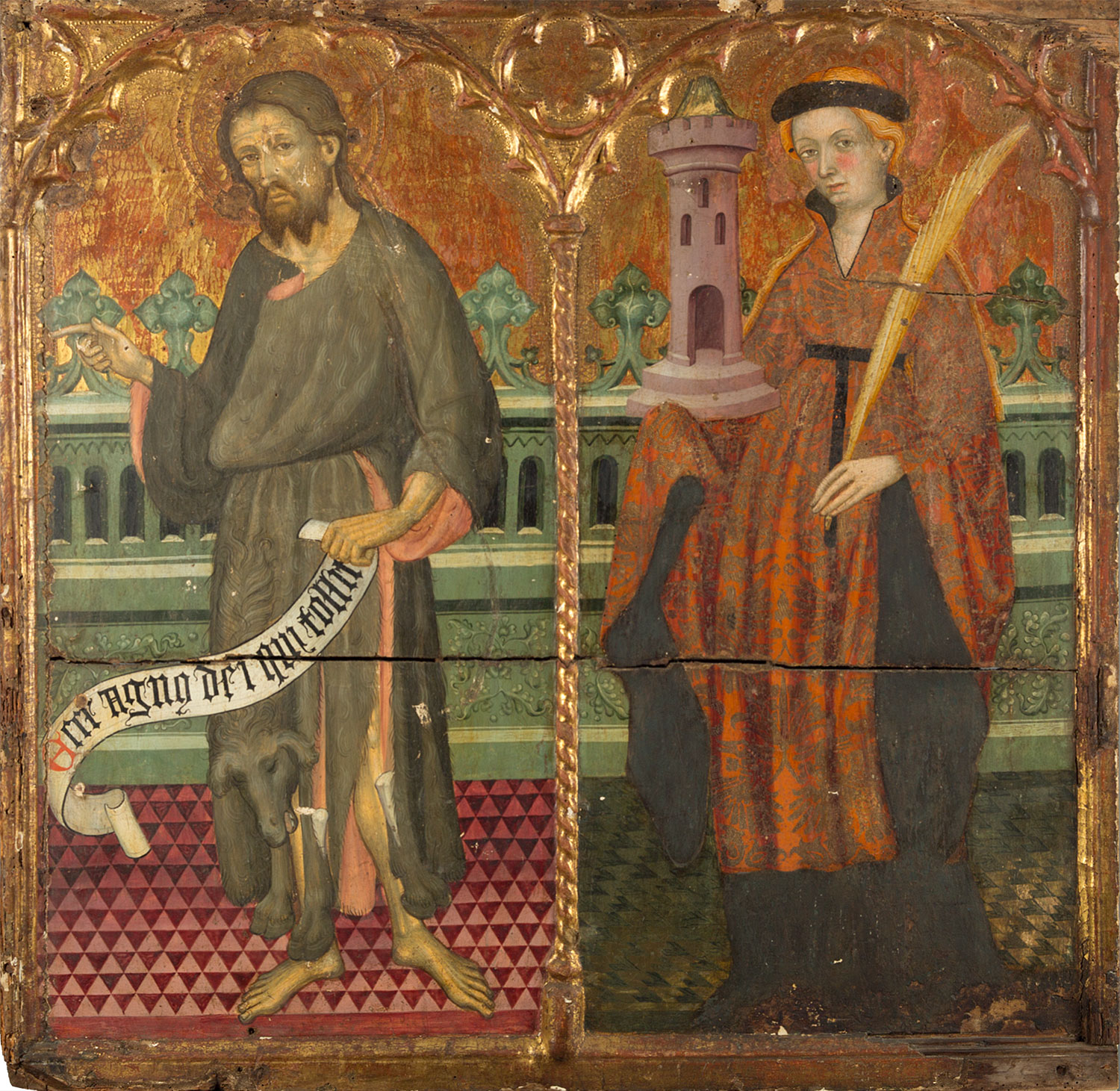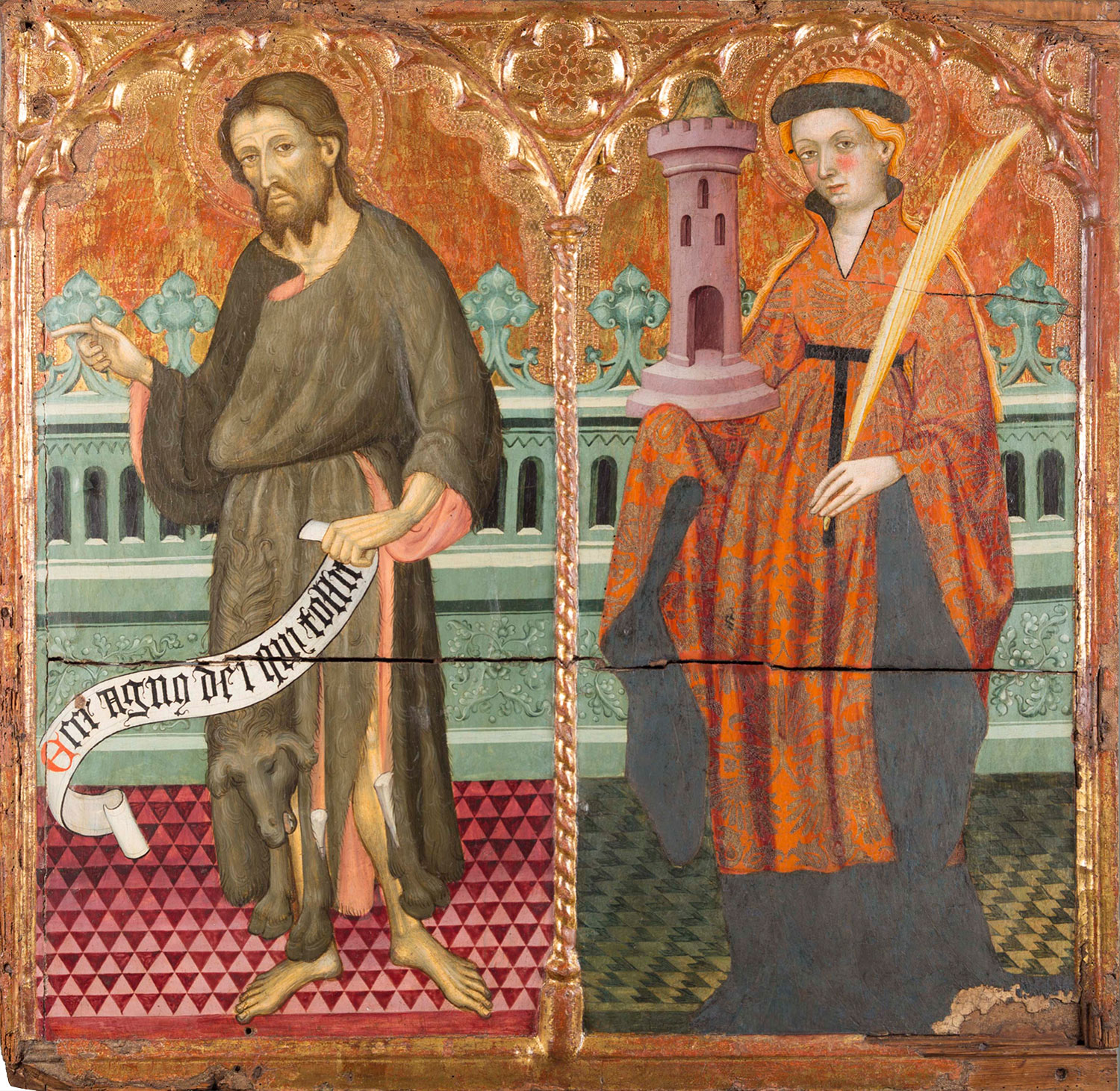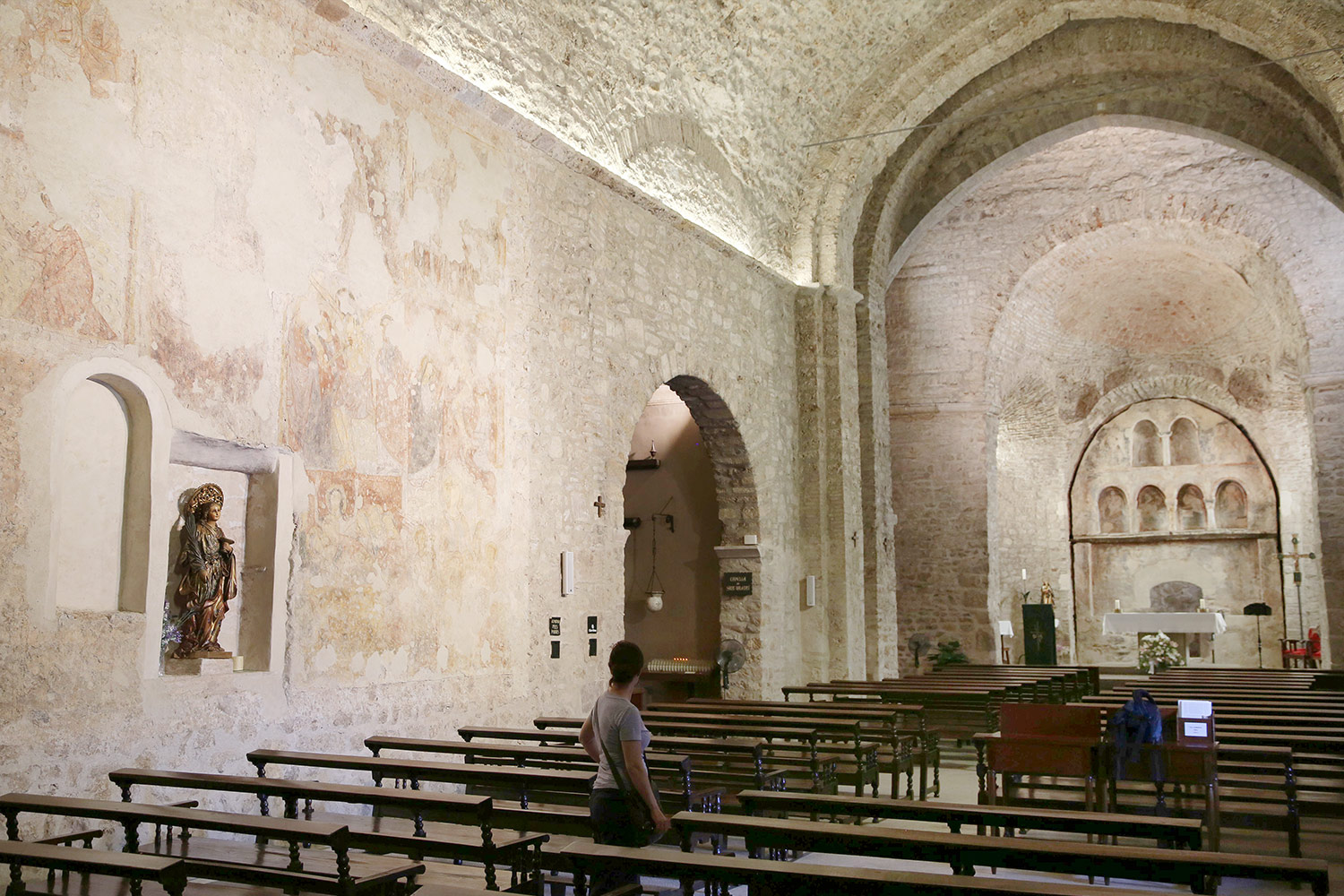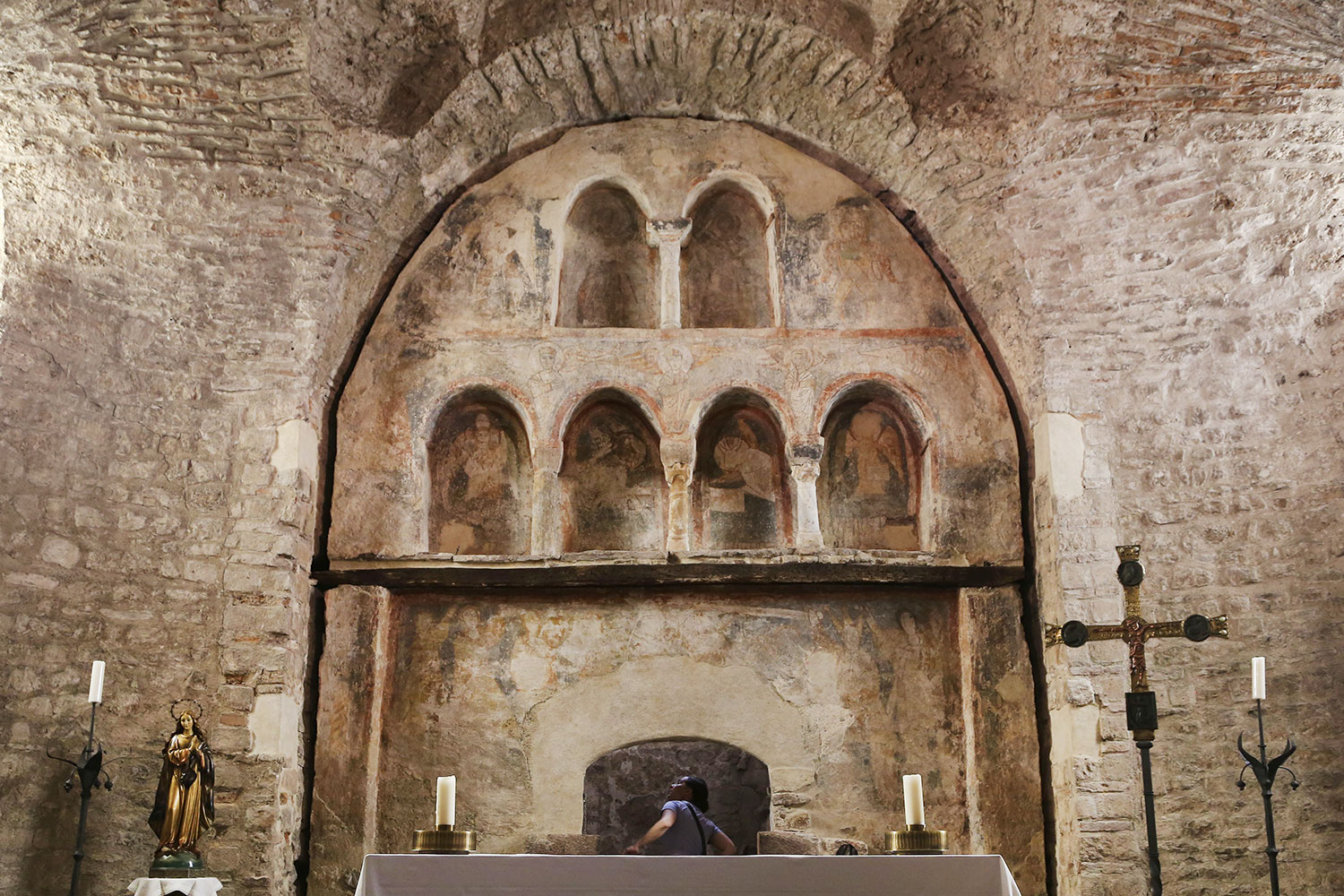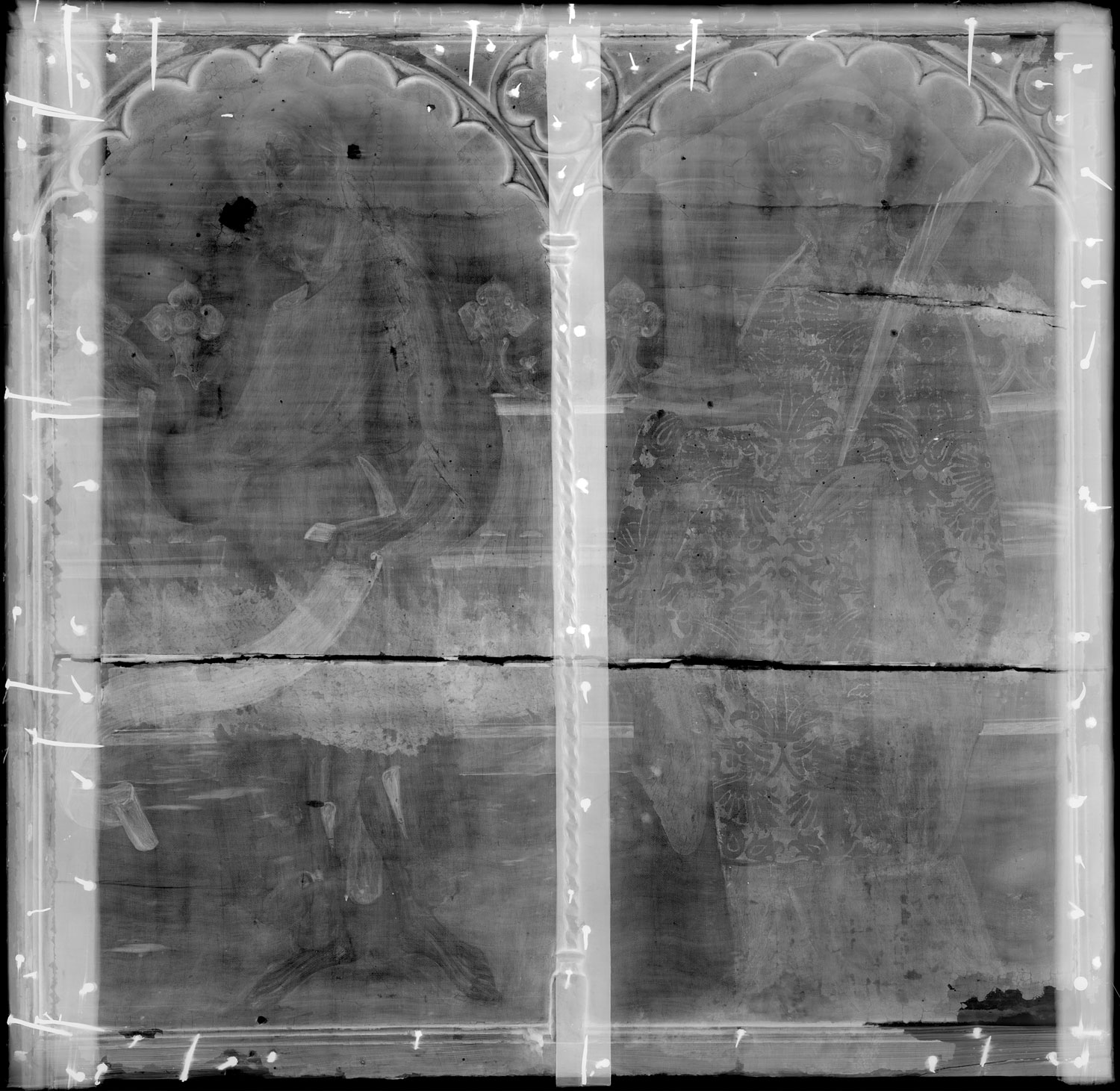Six hundred years ago, only candles illuminated the altarpiece in Saint Peter’s Church in Terrassa, Spain. Yet the painting glowed—the gilded background caught the light and directed churchgoers’ attention to the religious figures in front.
Preserving the Passage of Time

Today, one panel of Lluís Borrassà’s painting still draws in viewers, but in a different context. On display for the first time in decades, Saint John the Baptist and Saint Barbara now hangs in the Paul and Catherine Buttenwieser Gallery of the Harvard Art Museums, surrounded by other late medieval and early Renaissance Spanish works of art.
“We are reading the painting in different terms from how the 15th-century viewer would have,” said Cristina Morilla, associate paintings conservator in the Straus Center for Conservation and Technical Studies. Morilla recently completed an extensive analysis and conservation of the work. Before undertaking the project, Morilla traveled to Spain to gather information about the materials used to create the painting, as well as to learn more about its history and original context in Saint Peter’s Church.
International Research Project
During her trip to Terrassa in August 2016, Morilla was able to examine not only the original site of the altar in Saint Peter’s Church, but also the Museum of Égara’s reconstruction of how the full altarpiece may have appeared, which includes many of the original panels. She learned that the entire altarpiece would have risen more than two meters high behind the Communion table, and that the Harvard panel was located along the bottom in a section called the predella (or banco, in Spanish). Because of its prominent placement at eye level, it is presumed that Borrassà painted the figures in it himself (or at least had little intervention from his workshop), rather than assigning the task to an apprentice or servant in his workshop.
Morilla was also able to access papers from Borrassà’s well-documented workshop that specified the colors and pigments he used, information that would assist her in properly cleaning and conserving the piece. The archives revealed that the artist used costly materials—pigments such as azurite blue, cochineal carmine red, and vermillion red, as well as copious amounts of gold. Although gold was expensive in Borrassà’s time, he did not hesitate to gild the panel generously: gold frames the faces of Saint John and Saint Barbara, and even hides in a layer underneath the red lead paint of Saint Barbara’s dress.
Throughout the process, Morilla worked with an international team of experts. She consulted with the National Art Museum of Catalonia to understand Borrassà’s color palette. Based on this palette analysis, she then worked with the Straus Center’s Kathy Eremin, the Patricia Cornwell Senior Conservation Scientist, and Lucy Cooper, the Beal Family Postdoctoral Fellow in Conservation Science, to determine how best to clean the painting. At every stage of the project, Morilla looked to Teri Hensick, former senior conservator of paintings, for guidance—from advice on cleaning to determining which sections of the painting required conservation. A. Cassandra Albinson, the Margaret S. Winthrop Curator of European Art, also provided important curatorial guidance during the project and prior to the painting's installation.
Complexities of Cleaning
Having worked in conservation since 1990, Morilla has ample experience restoring paintings from this period. But this project was one of the most challenging she has ever encountered.
First, Borrassà painted mostly in tempera, a fast-drying egg-based medium, which poses difficulties for cleaning because it lacks the type of protective varnish layer one might expect on an oil painting, for example. But the artist additionally relied heavily on gilding and glazing with lacquer, two techniques that require an arduous cleaning procedure. All three techniques can be seen in one small area of the painting: Saint Barbara’s robe.
Most of Saint Barbara’s dress was done using a technique known as estofado, which involved both tempera painting and gilding. After gilding the base layer, Borrassà polished the gold surface and painted over it with tempera. He then scratched off areas of paint using a stencil to create the golden pattern of birds and flowers in her robe, which he decorated with elaborate motif punches and patterns of incised lines.
Borrassà created volume in Saint Barbara’s gown by glazing areas of shadow, adding a semi-transparent layer of red lacquer to create the illusion of folds in her dress. This lacquer required a different cleaning technique from both the tempera paint and the gilded areas of her dress.
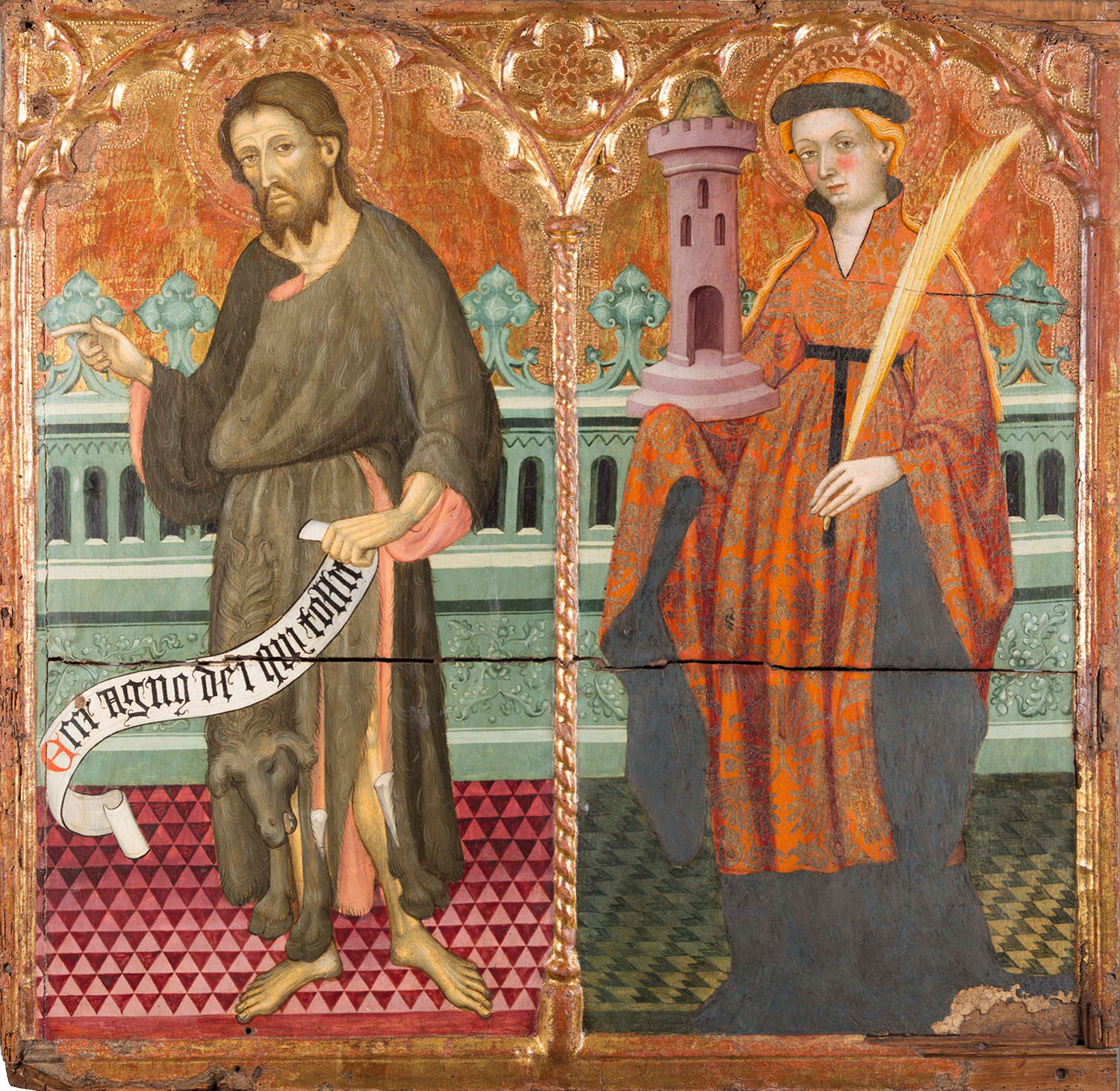

Leaving Her Mark
While she worked, Morilla sought to respect the natural aging process of the paints. As with most paintings from this period, she said, today’s viewer cannot truly “see” any of the original paint, because the colors have altered over time. Rather than attempt to restore the original hues of Borrassà’s painting, she cleaned the work and then selectively applied colors that matched the current appearance.
She focused only on sections of the painting where the loss of color distracted from the main image. Often, she would opt for “non-intervention,” leaving a loss of color visible if it did not interfere with the figures on the panel.
In order to distinguish her hand from Borrassà’s original work, Morilla used a conservation technique called tratteggio, for which she filled in a loss of color by painting in sets of tiny vertical lines.
“I don’t reconstruct shapes; I just mimic the tones surrounding the area of the loss,” said Morilla. “We try to match our technique with the master’s technique, but make it visible. When you see the painting from a meter or so, you don’t see our intervention; but when you get really close, you’re going to see it.”
A Teaching Tool
For educational purposes, Morilla intentionally left untouched a crack that runs horizontally across the entire panel. The crack likely resulted from joining two slabs of wood with dowels in the back of the painting, and Morilla noticed that it bears a remarkable resemblance to a crack in the corresponding panel on the other side of the predella. After analysis, Morilla and the team discovered that the two cracks line up perfectly, indicating that the two panels not only belonged to the same altarpiece, but were even constructed from the same pieces of wood.
Morilla also left exposed the bottom right corner of the panel where the paint had worn away, revealing a layer of cloth over the wooden base. This small area of wear illustrates how Borrassà’s workshop constructed the painting: the raw wood panel sits under a piece of cloth, which was used to prevent the wood from moving and potentially damaging layers of the painting. On top of the cloth are several layers of gesso, a white mixture used as a base for paint and other materials applied over it. Atop the gesso, Borrassà laid the color of the final image.
More than just a piece to display, the painting is also a historical artifact. Morilla said she kept this in mind as she conserved the work, embracing “an archaeological conservation process” that does not hide all of an object’s losses. (To experience the full effect of Morilla’s conservation, use the slider in the image below.)
“We didn’t want to take the time out of the object, and we are proud of that,” Morilla said. “Indeed, we can see time passing by in this beautiful painting.”
Anna Lin-Schweitzer served as the Summer 2017 writing and editing intern in the Communications Division at the Harvard Art Museums.
